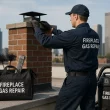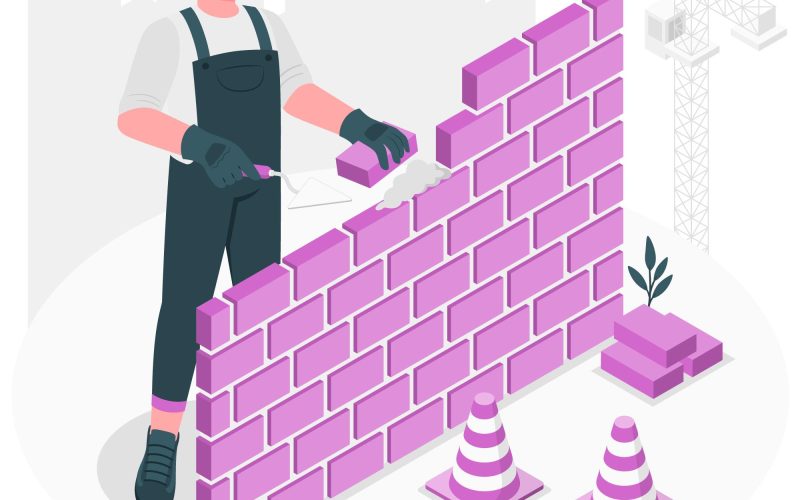A cracked or damaged driveway can lead to safety hazards, further deterioration, and costly repairs if not addressed promptly. Over time, concrete driveways suffer from wear and tear due to weather changes, heavy vehicle loads, and poor installation. Fortunately, repairing a concrete driveway doesn’t have to be daunting. With the right techniques and materials, you can restore your driveway to a smooth, durable surface that enhances your home’s curb appeal and longevity. This blog walks you through the best methods for repairing concrete driveways, common issues to look out for, and essential maintenance tips to keep your driveway in top condition.
Common Concrete Driveway Problems
Before diving into repairs, it’s crucial to identify the type of damage your driveway has. Here are some common issues:
1. Cracks
- Hairline cracks: Small surface cracks caused by shrinkage and temperature changes. These are often cosmetic but can still allow moisture to penetrate and cause further damage.
- Wide or deep cracks: Larger cracks due to heavy loads or shifting soil. These can lead to structural issues if not addressed promptly.
2. Spalling (Surface Flaking)
- Caused by freeze-thaw cycles, de-icing chemicals, or poor concrete mix. Spalling can weaken the surface of the concrete, making it more susceptible to further damage.
3. Potholes
- Result from moisture infiltration, erosion, and repeated pressure from vehicles. Potholes can be hazardous and should be repaired quickly to prevent accidents.
4. Uneven or Sunken Slabs
- Occurs due to soil erosion or settling, creating an uneven driveway surface. This can lead to tripping hazards and further structural damage if not corrected.
Now that you’ve identified the issue, let’s go over how to fix each one.
Step-by-Step Guide to Repairing a Concrete Driveway
1. Filling Small Cracks
For hairline cracks, follow these steps:
- Clean the Crack: Use a wire brush or pressure washer to remove debris and dust. This ensures a clean surface for the filler to adhere to.
- Apply Crack Filler: Use a concrete crack filler or patching compound designed for small cracks. Flexible fillers are best for hairline cracks to prevent re-cracking.
- Smooth the Surface: Use a putty knife or trowel to level the filler, ensuring it’s flush with the surrounding concrete.
- Allow it to cure: Follow the manufacturer’s instructions for drying time before using the driveway. This ensures the filler has fully hardened and can withstand traffic.
2. Repairing Large Cracks and Potholes
For deeper cracks or potholes, a more extensive repair is necessary:
- Chisel Out Loose Concrete: Use a hammer and chisel to remove loose or crumbling edges around the damaged area. This helps create a stable base for the new concrete.
- Clean the Area: Remove dust, debris, and moisture for better adhesion. A clean surface is crucial for ensuring the new concrete bonds well with the old.
- Apply a Concrete Bonding Agent: This helps the new concrete adhere to the old surface, ensuring a strong bond.
- Fill with Concrete Patch: Use a patching compound for cracks or a concrete mix for potholes. Make sure the mix is suitable for outdoor use and can withstand weather conditions.
- Smooth and Level: Use a trowel to create a smooth, flush surface. This ensures the repaired area blends seamlessly with the rest of the driveway.
- Allow Proper Curing: Keep the repaired area damp for a few days to prevent premature drying. This helps the concrete cure slowly and evenly, reducing the risk of cracking.
3. Fixing Sunken or Uneven Driveway Sections
If your driveway has uneven slabs, consider the following solutions:
- PolyRenewalTM Polyurethane Foam Injection: This modern technique uses lightweight foam to lift and stabilize concrete slabs efficiently. It’s less invasive than traditional methods and provides quick results.
- Slabjacking: A professional technique that lifts sunken concrete by injecting a slurry mixture underneath. While effective, it can be messy and requires more time to cure.
- Re-pouring Concrete: If the damage is extensive, removing and replacing sections of the driveway may be necessary. This is typically the most expensive option but provides a long-lasting solution.
Tips for a Long-Lasting Driveway Repair
1. Choose the Right Repair Material
- Use flexible crack fillers for hairline cracks to prevent re-cracking.
- Select a high-quality concrete mix for larger repairs. Ensure it’s suitable for outdoor use and can withstand weather conditions.
2. Prevent Water Damage
- Ensure proper drainage to direct water away from the driveway. This can involve adjusting the slope of the driveway or installing drainage systems.
- Seal cracks promptly to prevent moisture infiltration. Regular sealing can extend the lifespan of your driveway.
3. Use a Concrete Sealer
- Apply a penetrating concrete sealer every 2–3 years to protect against moisture, stains, and freeze-thaw damage. Sealers can significantly enhance the durability of your driveway.
4. Avoid De-Icing Chemicals
- Salt-based de-icers can cause spalling; use sand or non-corrosive alternatives instead. These options are safer for your concrete and the environment.
5. Maintain Regularly
- Sweep away debris, clean oil stains, and check for new cracks periodically. Regular maintenance can prevent minor issues from becoming major problems.
Conclusion
If your driveway has minor cracks, you can handle small repairs yourself, but for major issues like structural damage, large potholes, or severely sunken slabs, it’s best to call a professional. Regular maintenance and timely Concrete Repair in St. Louis can extend your driveway’s lifespan and keep it looking great.












